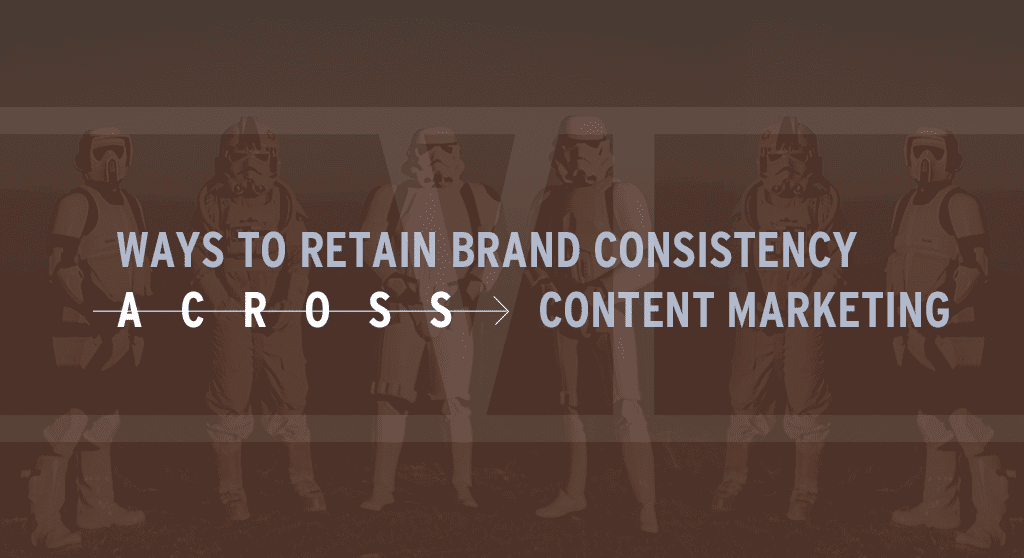Create instant brand recognition for your customers, no matter where they find you.
As you visitors scroll through their news feeds, be it on Facebook, Twitter, or LinkedIn, they are likely to encounter a barrage of advertisements from hundreds of businesses. They will see many of those brands follow them across the Internet, as they skim articles or shop for products. Amidst all these diverse brands, how can you make sure your business stands out from the throng?
The short answer is: your brand. When visitors come to your website, they are exposed to a certain look and feel. However, many marketers fail to retain that brand consistency across other channels. They publicize to social media using a content generation app that doesn’t match your font and image style. Or they send out a newsletter with a generic heading.
These inconsistencies risk losing you business. If your visitors don’t recognize you when they see you off your website, or if they can’t tell you apart from any of your competitors, then it’s highly unlikely they’ll remember you when the time comes to buy. Instead of losing your customer base, here’s a few ways to cultivate brand consistency so that your visitors remember you wherever you are.
1. Logo
Many businesses think that a logo and a brand are one and the same thing. For obvious reasons: the word “brand” also refers to the symbol ranchers use to use to mark their cattle. In that sense, when you place your logo on your product (or on an image to be shared across social media), you are marking it as yours. This is why it’s crucial to create logo that’s versatile enough to be used across a variety of applications. If you must update your logo, do so slowly and in stages.
You should use your logo liberally. But you can also communicate a strong brand through other elements. If you rely too much on your logo to create brand recognition, then you’re leaving other key visual cues by the wayside.
2. Color
What color do you instantly associate with Coca Cola? What about Starbucks? Or Facebook? You not only know what general color each of these brands uses, you know the exact hue. You know that Coca Cola isn’t a brick red, and that Facebook isn’t teal. And you know the shake of green Starbucks uses isn’t the same shade of green we use.
Color is one of the quickest means of establishing brand consistency. Even if you only use the color as a small accent in each post, having that small hint of brand consistency can trigger a reminder in the brains of your followers that this content comes from you. It strengthens the association so that, over time, they need fewer and fewer brand elements to remember your business.
3. Font
We’ve already mentioned Coca Cola, but they’re worth mentioning again for their use of font: you’d know that classic cursive script anywhere. (Meanwhile, I can’t remember if Pepsi uses a serif or sans serif font, and that was the beverage I grew up on.) There are other brands that have successfully created almost an entire identity around a single font. For instance, how about Star Wars?

It’s recognizably has lead to countless parodies over the years, which has only served to strengthen the Star Wars brand. Would that we all had such strong brand identity!
4. Image Style
Some brands use illustrations, while others prefer photography. Some illustrations are bold and graphic, while others are friendly, almost cartoony. Image styles cover a similarly wide range. However, we all know that certain images will never appear on certain brands.
We expect IKEA to have clean imagery, with lots of white space and pops of accent color. If they’ve ever used in illustration with their brand, I haven’t seen it. Most car and sports brands, by contrast, use harder imagery, with lots of black. It’s so ubiquitous that it’s almost detrimental.
Image style can come with some risks, however, if it plays into certain stereotypes. Abercrombie and Fitch weathered a number of controversies over the imagery associated with its brand, enough to threaten its future success. An iconic look doesn’t help you if all the associations are negative.
5. Tone
Your brand tone mostly comes through in your copy writing. How do you sound to people when they read your content? Confident? Adventurous? A little goofy? Casual? Classy to the point of pretention? Corporate? The choice is up to you, but whatever tone you go with, it shouldn’t change.
The strongest brands have a unified voice. Content sounds like it’s coming from an individual, even when it’s actually a collective of copy writers all working hard to sound like each other. We all know what Dos Equis’s “Most Interesting Man in the World” sounds like: confident, and a little cheeky. Similarly, we know what to expect from Apple: sophisticated and a bit full of itself (as even Mac users will tell you). If either of these companies started talking like a laidback surfer, we’d think the corporation was having an identity crisis.
Similarly, don’t play hot and cold with your customers. If you use a friendly tone in your advertising, don’t revert to stiff legalese the moment some bad PR comes your way. And if you prefer a more professional tone, a foray into friendliness is likely to sound fake.
6. Content
Of course, the type of content you create is just as important as the way in which it is presented. The typical Buzzfeed article has a markedly different style than, say, your average piece from the New York Times. These publications market to different audiences, with NYT catering to a more serious, intellectual crowd, and Buzzfeed toward the millennial market. You don’t need me to tell you which publication is more likely to feature an article titled “Tell me your favorite drink and I’ll tell you which Power Rangers character you are.” You already know.
However, this isn’t to say that Buzzfeed doesn’t sometimes come out with quality journalism. That’s because, in spite of their reputation for listicles and clickbait quizzes, they also understand their market. Millennials tend to be an internet savvy, socially-conscious group of people. Seeing a piece of legitimate reporting on their favorite procrastination site makes them feel better about their publication of choice.
The point is that your brand content extends beyond a narrow focus on your business or your product. Instead, it incorporates the interests and aspirations of your target audience. It extends your brand beyond your company, and encompasses what your brand can do for your customers.
Brand consistency is an asset.
Brands aren’t hard to create. Many savvy entrepreneurs have stumbled on their brands as if by chance, naturally creating something consistent and recognizable through sheer authenticity. Other businesses craft their brands with care, paying attention to every detail. However you cultivate yours, remember that it can take years to form the indelible impressions we have with companies like Nike and Starbucks. The more you change your brand along the way, the more those associations will need to be reformed. Maintaining a consistent brand throughout the years will do more than updating it to match the latest style trend.







